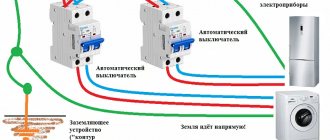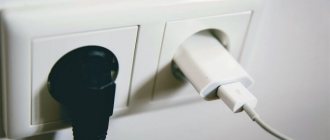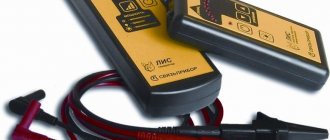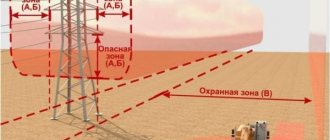One type of injury is electric shock. Unfortunately, despite the fact that everyone knows about the dangers of devices and wires, this still occurs quite often. The most common electrical injuries occur at work. This applies to those activities in which people work with various technical devices and wiring. In addition, you can get an electric shock at home. In most cases this concerns children. Therefore, everyone should know what to do if they get an electric shock? After all, the faster help is provided, the lower the risk of complications.
Causes of electrical injuries
Electric shock is one of the most dangerous types of injuries. If the device has high voltage and prolonged contact with the source, it can be fatal. Injury can occur due to various reasons. The most common of these is contact with a bare wire. This can happen to anyone, especially people who work with electricity. A bare wire is a particularly dangerous source of current. Most often, electricians come into contact with it when repairing meters, sockets, etc. In addition, you can get electrical injury from ordinary appliances that are used every day: hair dryer, kettle, mobile phone charger, microwave oven. Normally, all household appliances are not dangerous, since the wires have a protective layer. If it breaks, its integrity is compromised. This may result in exposed wires. Therefore, broken appliances must be removed and kept away from children! After all, despite the small dose of electricity, they can be dangerous to the child’s health. Another source of current is sockets.
You can get an electrical injury not only indoors, but also outdoors. Lightning is a natural source of current. When exposed to the human body, it can lead not only to burns, but also cause death.
Under what circumstances can a person be shocked by electric shock?
During operation and repair of electrical equipment, there is a possibility of contact with exposed live wires. You can get an electric shock by touching two wires with different phases. By contacting one phase, a person becomes a conductor, touching grounded metal structures or standing on a wet floor.
In everyday life, the source of damage is often faulty electrical wiring, broken sockets and switches. Electrical injury can result from faulty insulation of electrical appliances connected without grounding.
Violation of the operation of household electrical appliances
An electric shock can occur without direct contact with a conductor. In conditions of high humidity and close to a source of electricity, insulation breakdown may occur and an electric arc may occur.
Broken power lines cause wires to come into contact with the ground. They are capable of creating a step voltage within a radius of up to 10 m. A potential difference arises between two points on the surface located at a distance of one human step.
The severity of the injury depends on the path the current travels through the human body. Electric current always travels the shortest distance towards the ground.
Important! The most dangerous are lesions of the heart, brain, spinal cord, and lungs. Paths of electric current through the human body
Paths of electric current through the human body
Possible paths:
- “Hand-to-hand” is the most common practice (40%). A person touches the phase with one hand, and the grounded surface or zero phase with the other. The risk of heart damage is less than 5%.
- “Hand-legs” - when one hand touches the conductor, the electric current path is closed through both legs to the ground. Passage through the heart is 3-7%. The option of touching the right hand is more dangerous (20%).
- “Leg-to-leg” - the lesion occurs under the influence of step voltage. Electrical injury is rare (6%).
- “Head-foot” (5%)—creates the most dangerous loop and requires urgent resuscitation measures.
When performing electrical work, it is recommended to use protective equipment: dielectric gloves, galoshes, rubber mats. Power tools must have insulated handles.
Electric current is dangerous to the human body. To prevent injury, you must follow simple safety rules. Reliable means of protection against damage in everyday life - installation of RCDs and differential circuit breakers.
A child was electrocuted: symptoms
Unfortunately, despite parental control, children are still exposed to electrical injuries. Most often this happens when kids try to insert their fingers or iron objects into an outlet. It is not always possible to see exactly how a child injured himself. Therefore, it is necessary to know the symptoms that will bother the baby after contact with current. First of all, these are painful sensations. Regardless of the strength and duration of contact with the exposed device, the child will get scared and start screaming. If the baby has been electrocuted in the arm, it is necessary to examine the surface of the skin. If there is local damage, "electrical signs" will be observed. They are gray or yellow spots with clear boundaries. There is pain when touching them. General electrical trauma is manifested by convulsive muscle contractions, in severe cases accompanied by loss of consciousness.
Can welding cause electric shock and how much?
- Incorrect grounding of the bathroom, electrical appliances and outlets or lack of grounding.
- Violation of the insulation of wiring installed in the walls.
- Neighbors use the pipe as grounding or for unauthorized withdrawal of electricity. In this case, you need to contact the energy supply company or Energonadzor for help.
- A washing machine connected to an outlet (even if not running) is not grounded.
- Your or your neighbors' water heater is malfunctioning (if you received an electric shock from the water).
Useful tips Connection diagrams Principles of operation of devices Main concepts Meters from Energomer Precautions Incandescent lamps Video instructions for the master Testing with a multimeter
What to do if you get an electric shock: first aid
If there are signs of electrical injury, the person must be given immediate assistance. First, remove the source of tension from the body. Avoiding contact with electricity is the main measure. What to do if an electric shock strikes and a person loses consciousness? In this case, you shouldn't panic. First you need to call an ambulance. After this, it is necessary to assess the condition of the victim. To do this, the status of vital signs is checked: pulse, blood pressure and respiration. If there is no heartbeat, resuscitation measures must be carried out immediately. These include:
- Providing oxygen flow. You need to open the window, free your neck from tight clothing, and clean your mouth (if necessary).
- Tilt the victim's head back and push the lower jaw forward.
- Perform a closed heart massage: press the xiphoid process with clenched palms 30 times.
- Cover your nose with one hand and blow air into the victim’s mouth 2 times.
These activities must be repeated until spontaneous breathing and heartbeat appear.
Which current is more dangerous for human life
Alternating current is used much more often in industry and everyday life. People have long been accustomed to this and few people know that in the 19th century Nikola Tesla and Thomas Edison launched a real “current war”, the results of which determined the further path of industrial development.
Conductor of electricity
One of the arguments given by Edison in defense of direct current was its lower danger to humans compared to alternating current. Under the same conditions (up to 500 V), the force of alternating current on the body is 2-4 times higher.
In the end, the AC concept won. It is much lighter and transmits over long distances with less loss, is easily converted, and is more convenient for the operation of electric motors.
The effects of electric current on the human body:
- Thermal (up to 60%) - heating of the skin and internal tissues up to burns;
- Electrolytic - decomposition and disruption of the physical and chemical composition of organic liquids (blood, lymph);
- Mechanical - stratification and rupture of internal organs under the influence of electrodynamic shock;
- Biological - convulsive contractions of muscle and nervous tissue.
Attention! Loss of consciousness, as well as disruption of the heart and lungs, occurs when the frequency of the electrical flow and heart contractions coincide
Variable
An electric current that changes in magnitude and direction over time. The flow of electrons constantly oscillates at a certain frequency.
Sinusoid of electron motion
Why is alternating current more dangerous for human life than direct current?
- By its nature, it causes stimulation of the nervous system, contraction and relaxation of muscles, which increases the likelihood of atrial fibrillation, leading to cardiac arrest;
- The frequency of the passing pulse reduces the resistance of the human body;
- An electrical conductor carrying alternating current has a high attractive force.
On a note! The upper limit of alternating current strength that does not lead to damage or serious consequences is 1.2 mA.
Constant
Electric current is the movement of charged particles from minus to plus, the polarity and voltage of which are constant. The flow of electrons goes strictly in a straight line without fluctuations. The severity of the lesion is directly proportional to the amount of voltage applied.
DC generator
Reasons for the lower danger of direct current compared to alternating current:
- Causes muscle spasm, but does not lead to cardiac dysfunction;
- The resistance of the human body is higher when the electron oscillation frequency is zero;
- A single blow allows you to quickly stop direct contact with an electrical conductor, throws a person back, reducing the duration of exposure to damaging factors on the body.
Attention! The upper limit of safe exposure to direct current is much higher - 7 mA. Comparison of the effects of alternating and direct electric currents on the body to find out which current is more dangerous
Comparison of the effects of alternating and direct electric currents on the body to find out which current is more dangerous.
| Electric current strength (mA) | Alternating current | D.C |
| 0,6–1,5 | Slight tingling | No sensations |
| 2–3 | Mild cramps | -«- |
| 5–7 | Severe cramps | Slight tingling, slight sensation of warmth |
| 8–10 | Severe pain, the upper threshold of the ability to open your hands independently | Symptoms of skin tingling and heating increase |
| 20–25 | Paralysis of limbs, inability to release the current source | Mild cramps, strong heating of the skin |
| 50–80 | Cardiac dysfunction, respiratory center paralysis | Difficulty breathing, severe convulsive spasms |
| 90–100 | Respiratory arrest, possible atrial fibrillation | Paralysis of the respiratory system, the likelihood of the victim being thrown back, causing physical injury |
| 200–300 | When exposed to more than 0.1 s, cardiac arrest, tissue destruction | Thermal destruction of tissues |
Note! It is important to know what current is life-threatening - 50-100 mA, more than 100 mA - fatal. Assistance in case of electrical injury
Providing assistance in case of electrical injury
Treatment of affected skin areas
After the basic measures have been carried out, the burn areas should be treated. Electric shock always leaves 2 marks on the body. They need to be found and washed with running water for several minutes. “Current marks” should not be treated with an antiseptic solution, as this may increase the depth of the lesion. After washing, the skin should be wrapped with a cloth soaked in cold water.
Providing specialized assistance in case of electric shock
When all the measures have been completed, the question arises: what to do if you get an electric shock and first aid does not bring results? Regardless of how the victim feels, after removing the source of electricity, you need to call an ambulance. This is especially true in cases where a person has lost consciousness. In case of severe injuries, the victim is hospitalized. The hospital provides detoxification and symptomatic therapy. For convulsive syndrome, the drug “Diazepam” is administered.
Electric shock in medical language is called “electrical trauma”. It is characterized by the effect of electric current on the human body at the highest possible value and duration.
Unfortunately, some such injuries are fatal, especially if the stress was too great, or a fragile organism, for example a child, was hit.
Disadvantages of AC
When transmitting the energy of a current changing direction over long distances, difficulties arise. The creation of the Unified Energy System revealed a number of shortcomings:
- the capacity of cable lines is low due to the capacitance between the conductors and the ground;
- when merging and looping system branches located at large distances from each other, it is impossible to synchronize stations;
- The threshold stability limit required for coordination ends at line lengths exceeding 500 km, which requires an increase in voltage to 450 kV, which leads to an increase in the cost of terminal equipment.
For your information. When the voltage increases, a corona discharge occurs near the overhead lines. This is the process of ionization in conductors with a small radius. To prevent electricity from draining in this case, it is necessary to increase the diameter of the wires, this leads to an increase in the cost of the line.
Why is fast response so important?
First aid in case of electric shock should be provided instantly, and each of you needs to know how it is done. This was taught in life safety lessons at school, but many of us hardly remember all the regulations for actions in such cases. Nevertheless, it is extremely important and useful to know about this, since none of us is immune from such influences.
The consequences of an electric shock are not always fatal, but they, one way or another, leave a serious imprint on the health of the human body.
Electrical injuries usually occur due to carelessness or curiosity.
- For example, teenagers can climb into a transformer booth without really thinking about the consequences.
- Very often, small children become victims of electricity; while exploring the world around them, they can simply touch a regular household outlet, grab a plug, or, worse, stick their fingers into its connectors.
Therefore, young parents should closely monitor the actions of their baby and, if possible, protect him from such consequences. What to do in case of a short-term electric shock and after it?
STRONG EFFECT OF WEAK CURRENT
The man sits in a chair and closes his eyes. The doctor places electrodes: two in the forehead and two behind the ears, and turns on the device. The current is weak, 2-3 mA, the patient does not experience any unpleasant sensations. This is transcranial electrical stimulation (TES) - a treatment method that has undergone clinical trials and is approved by the Russian Ministry of Health. It is used by doctors of various specialties in 300 medical institutions in Russia and the CIS countries, as well as in Bulgaria, Israel, the USA and Canada. It was developed by scientists from the St. Petersburg Institute of Physiology named after. I. P. Pavlova RAS.
Electroshock was one of the remedies recommended by the American neurologist George Beard (1839-1883) for the treatment of neurasthenia. Drawing, 1905.
Professor V.P. Lebedev, director of the center for transcranial electrical stimulation in the editorial office of the journal 'Science and Life'.
The use of electrical stimulation for the treatment of a patient with burns of 60% of the body surface at the Burn Center of the Research Institute of Emergency Medicine named after. N.V. Sklifosovsky (Moscow).
‹
›
I am in the basement of the institute, where the Center for Transcranial Electrical Stimulation is located. Electrostimulation devices called "Transair" are produced here - a wide variety of devices intended for use in the clinic and even at home. What the director of the center, professor and USSR State Prize laureate Valery Pavlovich Lebedev, says looks like science fiction. It turns out that EFT normalizes blood pressure, relieves stress, fatigue, relieves pain, stimulates the immune system, accelerates the healing process of wounds and burns and, to top it all, inhibits the growth of cancer! I immediately remember television commercials advertising remedies for all diseases. Well, we no longer believe in a panacea - society has finally developed a healthy skepticism. Is it possible to find an explanation for the wonderful properties of TES?
Let's turn to the history of the issue. Physiologists have long known that with the help of pulsed electric current it is possible to suppress the transmission of signals through the nerve cells of the mammalian cerebral cortex. The effect of current on the brain began to be studied by the French physiologist S. Leduc in 1902 to obtain the effect of anesthesia. Research continued in laboratories in many countries - France, Russia, the USA - until the mid-70s. Many years of efforts by physiologists did not bring the desired results - electrical stimulation did not relieve the symptoms of insomnia, and anesthesia under the influence of electric current was more reminiscent of an electric shock and turned out to be very dangerous to health. Perhaps this happened because electrophysiological experiments were carried out haphazardly, were purely applied in nature and did not have a strict scientific basis.
In the early 80s, a scientific group led by V.P. Lebedev was tasked with modifying electrical stimulation devices, which at that time were used (not very successfully) in some Leningrad hospitals for pain relief in childbirth. Scientists conducted many experiments on laboratory animals, selecting optimal conditions to obtain the maximum physiological effect. Then Professor Lebedev first introduced into medical practice the term “transcranial electrical stimulation” (from the Latin words “trans” - through and “cranium” - skull).
As the results of the studies have shown, it is possible to ensure that electrical stimulation has a positive effect on the nervous system. You just need to very accurately select the mode and correctly install the electrodes on the patient’s head. It turned out that electrical stimulation actually relieves pain, but only in a certain—rather narrow—range of current parameters, which are different for different animal species. For humans, the optimal “pain-relieving” pulse current frequency is about 77 Hz; if it deviates by at least 7-10 Hz, the effect decreases sharply. The analgesic effect occurs only when the electrodes are oriented from the forehead to the back of the head. If the regimen was observed (frequency of current and position of electrodes), the analgesic effect persisted for another 8-12 hours after the end of stimulation.
What is the mechanism of the analgesic effect of TES? Certain brain structures are responsible for pain relief: the nuclei (clusters of neurons) of the hypothalamus and raphe and the so-called periaqueductal gray matter - neurons surrounding the cavities - the “plumbing” of the brain. Under the optimal conditions of electrical stimulation found by Lebedev’s group, these nerve cells release a substance from their endings - beta-endorphin. It is this “good wizard” who relieves pain. And one session of TES increases the content of beta-endorphin in the blood plasma and cerebrospinal fluid several times. Therefore, TES can be successfully used (and is already widely used) for the treatment of various pain syndromes: radiculitis, osteochondrosis, headaches and toothaches. By correctly using electrical stimulation, you can eliminate or significantly reduce the dose of narcotic drugs, even during surgery.
Beta-endorphin belongs to a very interesting group of short-chain protein molecules called opioid peptides. These are endogenous (that is, synthesized in our body) substances, the analgesic and sedative effect of which is due to their interaction with special binding sites on the membrane of the nerve cell - opiate receptors. The narcotic substance morphine, which also has an analgesic effect, also interacts with them.
The most important tool for studying the opioid system is a synthetic substance - naloxone. It is similar in structure to the morphine molecule, but does not have its biological activity. Naloxone binds firmly to opiate receptors, as if “blocking” them. The administration of naloxone leads to the “displacement” of opioid molecules from the receptors, and their sedative and analgesic effect disappears. This means that if naloxone reverses the effect of a compound, this proves the opioid nature of the effect (meaning that the substance being tested exerts a physiological effect by binding to opiate receptors).
Pain relief is the most obvious, but far from the only effect of electrical stimulation; as already mentioned, there are many of them. In Professor Lebedev's office there is a large diagram on which they are presented. Why is this technique so universal? Let's try to figure it out.
EFT normalizes blood pressure. It normalizes, that is, it reduces it in hypertensive patients, and increases it in people with low blood pressure. Why? The effect is reversed by the administration of naloxone and is therefore opioid in nature. “A disturbance in normal blood pressure means a malfunction of the vasomotor center in the medulla oblongata,” explains Valery Pavlovich. — Such a failure can be caused by external influences, such as stress. Opioid peptides regulate the functioning of the vasomotor center, and the pressure is normalized.” Therefore, the method is successfully used to treat vascular spasms of various origins, hypertension, hypotension, and vegetative-vascular dystonia. But nevertheless, it is not worth using TES in case of hypertensive crisis and stage III hypertension.
TES stimulates the immune system, increases the body's resistance to various types of infectious diseases. How? It turns out that lymphocytes, the cells responsible for the immune response, have many opiate receptors on their surface. Beta-endorphin, entering the bloodstream, interacts with them, thus activating lymphocytes and prompting them to more intensively destroy proteins, viruses and cells foreign to the body. Moreover, the immunostimulating effect of TES is so strong that it can sometimes relieve a patient from allergies.
Beta-endorphin is not only a pain reliever, it can act as an antidepressant and anxiolytic (anxiety medication). This substance is responsible for our mood, a sense of comfort, and its increased content in the blood plasma can even cause euphoria. If the concentration of beta-endorphin is high enough, a person has a good mood and high self-esteem, and if it is low, the person feels insecure, anxious, and easily becomes depressed.
Therefore, it is not surprising that electrical stimulation of the brain can treat depression and chronic fatigue syndrome (see “Science and Life” No. 12, 2000). Chronic fatigue syndrome has recently affected more and more middle-aged and young people. Patients constantly feel mortally tired, their attention is scattered, and their mood is low. Patients who underwent treatment using the TES method at the Moscow Neurosis Clinic began to feel much better after several sessions, and the objective indicators of psychophysiological tests also changed. Electrical stimulation also relieved fatigue in practically healthy people at the end of the working day. One session was enough for them to feel rested and signs of fatigue disappeared.
There is another area of application of TES - with its help, it is possible to effectively adapt soldier recruits to military service. It turned out that electrical stimulation develops neuropsychological resistance to army life in soldiers. Therefore, today Professor Lebedev’s method has found application where a psychologically unstable recruit simply cannot survive - in Chechnya.
TPP effectively combats two terrible scourges that have literally overcome our society in recent years - drug addiction and alcoholism. Drugs, like alcohol, acting through the same opiate receptors, cause a state of euphoria in a person. Electrical stimulation of the brain helps in the treatment of withdrawal symptoms and relieves drug addiction and cravings for alcohol. This is the idea of treatment. Drugs and alcohol are opiate receptor overstimulants. With regular consumption, the opiate system is constantly “stimulated” and gradually weakens, losing sensitivity. A state of tolerance occurs, that is, when more and more drugs and alcohol are required to achieve the euphoric effect. The generally accepted method of treatment is based on blockade of opiate receptors - patients are administered naloxone. St. Petersburg scientists offer an alternative approach - not to oppress, but to develop and activate one’s own opiate system so that external stimulants are no longer needed. And this can be achieved through electrical stimulation. By the way, electrical stimulation does not exclude traditional methods of treating alcoholism and drug addiction. According to Valery Pavlovich Lebedev, TES can be quite successfully combined with the well-known “Detox” program.
The next effect of TES seems incredible at first - accelerating the healing of wounds and burns. How and why does this happen? Leading researcher at the Burn Center of the Research Institute of Emergency Medicine named after. N.V. Sklifosovsky Professor Larisa Ivanovna Gerasimova evaluates the new treatment method.
“In burn patients, a pronounced analgesic effect was observed under the action of pulsed current. When the pain syndrome is relieved, blood circulation in peripheral tissues improves, and therefore, reparative processes in patients are enhanced - healing proceeds better. In addition, their sleep improves, their appetite improves, and they become calmer. After all, a burn is a severe mental trauma, a huge stress, the consequences of which must be dealt with.”
Doctors at the Burn Center conducted scientific research and “caught” an increase in the concentration of beta-endorphin in the blood of patients after an electrical stimulation session. But not only that. It turned out that the content of somatotropic hormone (growth hormone) also increases in the blood, which, like insulin, is anabolic, that is, it stimulates the synthesis of new cellular proteins. It is possible that this is precisely what determines the acceleration of reparative processes in tissues under the influence of TES.
Electrical stimulation was also successfully used in the cardiology department of the Sklifosovsky Institute (head of the department - Academician of the Russian Academy of Medical Sciences A.P. Golikov) for the rehabilitation of patients in the acute period of myocardial infarction. After all, TES can stimulate the regeneration of not only the skin, but also connective tissue, so it accelerates the healing of post-infarction scars.
Another area of action of electrical stimulation: it helps restore damaged nerve fibers. First, scientists at the Thermal Power Plant Center demonstrated this in experiments on laboratory rats. And then doctors used the method to treat hearing loss that occurs when the auditory nerve is damaged. Electrical stimulation also accelerates the regeneration of liver tissue, and in case of toxic hepatosis (for example, in drug addicts) - restoration of its function. In the case of restoration of liver function, TES is more effective than the well-known drug Essentiale.
According to Professor Lebedev, the detailed biochemical mechanism of EFT has not been established, but it appears to involve more than just the opioid system. It has been shown that after a session of electrical stimulation, along with an increase in the content of beta-endorphin in the blood, the concentration of other important neurotransmitters, such as serotonin, also increases.
What is the role of serotonin in the mechanism of physiological action of EFT is not yet clear. There is an assumption that it is the production of serotonin that plays a role in improving attention and memory after electrical stimulation. EFT helps children who cannot sit still, cannot concentrate, and therefore have difficulty learning. The St. Petersburg Brain Institute found that EFT has a positive effect on them - attention and perseverance increase. The technique was also used on elderly patients in psychoneurological boarding schools; an improvement in the condition and mood of the patients, memory restoration and increased capacity were observed.
And finally, cancer therapy. TES was successfully tested at the Institute of Oncology named after. N.N. Petrova in St. Petersburg for hepatoma, ovarian cancer, lymphosarcoma. Lebedev emphasized that TES is not physical therapy (it is absolutely unacceptable for cancer patients). Electrical stimulation is primarily an alternative to the drug morphine, which is used as an analgesic in cancer patients. Also, according to the observations of practicing doctors, TES slows down tumor growth and improves the general condition of patients. The mechanism of action is to enhance the immune response. It is especially important that beta-endorphin activates “killer cells” that destroy malignant cancer cells.
So, the influence of EFT is truly universal, and each effect has an explanation. But if the problem is mainly in the ubiquitous beta-endorphin, then it turns out that the therapeutic effect can be achieved by stimulating the production of this substance in any other way. Opioid peptides - endorphins (hormones of the hypothalamus and pituitary gland) and enkephalins (hormones of the adrenal cortex) are released in the body during positive emotions and when receiving pleasure. Is our health really so directly related to our mood, mental and physical comfort? So, you can increase the level of beta-endorphin not only with the help of electrodes, but with friendly communication, good music, a walk in the forest, and finally, delicious food and sex? It is not news that all these factors have a positive effect on health, but to what extent and can this be compared with the effect of transcranial electrical stimulation? The answers to these questions will probably be provided by the medicine of the future.
How and why do electric shocks occur?
A person can suffer from an electric shock under fundamentally different circumstances. And for this it is not at all necessary to poke your finger into the socket. It is enough to walk along the ground where the short-circuit cable is laid. This can also happen when certain surfaces in the home are overvolted, or when trying to insert a plug into a bad, old outlet. If you have a child, you should carefully monitor his games and instruct him on the subject (if he is of a conscious age) how dangerous some curiosity can be.
- Electric shock comes in different forms. It may be insignificant, or it may turn out to be truly fatal and fatal. It all depends on the duration of exposure to electricity on the body and the voltage threshold that was present in the network at the time of the injury. Most often, people are exposed to electric shocks of 220 volts, since this is the indicator that is present in our household electrical wiring.
- The most minor consequence of a 220-volt electric shock is the appearance of grayish and yellowish spots on the skin. At the same time, the person feels relatively normal and does not show any complaints about his own condition. This usually happens if the impact is short-lived.
- An important phenomenon in the pathogenesis of electrical injury is the path of electric current through the human body. All tissues of the human body vary significantly in the amount of resistance to its movement, and their conductivity is highest in those places where the tissues are filled with moisture. The most resistant to such influences are bones and skin. And soft tissues - muscles, organs, blood - are good conductors, and, therefore, are the most vulnerable in this regard.
- Nerve trunks and endings are also fairly good conductors. But, most interestingly, skin can also be turned into an excellent conductor of electric current. And to do this, just moisturize it. Then a lesion that is insignificant under normal conditions can turn into a real fatal shock for a person.
- The characteristics of the voltage itself should also be taken into account. For example, alternating current is much more dangerous than direct current. This is due not to its qualitative characteristics themselves, but to its ability to provoke muscle spasms, due to which a person in trouble simply cannot free himself from the “deadly” contact.
- Cramps are often accompanied by increased sweating, which naturally moisturizes the skin, making it an excellent conductor for tension, which spreads throughout the body quite quickly. When the current begins to penetrate the body with even greater intensity through the skin, it provokes damage to the respiratory tract and heart. Ultimately, the patient develops a fatal arrhythmia and dies.
- Death rarely occurs from low voltage electric shock. It is caused rather by the direct effect of a relatively weak current on the myocardium. In this case, ventricular fibrillation develops. If we talk about high voltage (1000 volts or more), it provokes sudden death due to the direct effect on the centers of the brain responsible for the activity of the heart and respiratory organs.
- The saddest and most terrible outcome of an electric shock is instant death. However, it is no better when the victim remains conscious and cannot break contact with the source of voltage. Loss of consciousness with serious damage to the vital functions of the human body is also possible.
Consequences of electric shock
In case of electric shock, it is impossible to visually assess the severity . In domestic conditions, electrical injuries rarely lead to death, but the symptoms of the injury will remind a person of what happened for a long time.
- Burns of varying severity . They occur not only at the site of the lesion. The discharge can cause clothing and hair to ignite and cause a fire at the scene. There are 4 degrees of burns: from redness of the skin to necrosis of all layers of skin and bone tissue. The outcomes can be either favorable - complete restoration of the integrity of the skin, or extensive scarring.
- Typical for electrical injuries are marks or patterns of various shapes and colors, painless, often pale yellow oval spots with a clear outer contour. They begin at the point of contact with the current source due to thermal and electrochemical effects. No two marks are the same. No specific treatment is required. They go away on their own.
- Electrometallization of a skin area . This is the impregnation of skin cells with small pieces of metal in the event of its evaporation or splashing under the influence of current. In this case, the skin becomes rough and turns the color of the metal that has penetrated the skin.
- Damage and disruption of the nervous system at different levels: convulsions, dizziness, numbness of the extremities (usually those affected by electric current), tremors, chronic pain, coordination problems, stroke, cerebral hemorrhages, etc.
- Loss of consciousness . In case of domestic injuries, it is usually short-term.
- Disturbances in the functioning of the heart : the pulse is difficult to palpate, heart murmurs appear, tachycardia, etc. When a discharge directly passes through the heart, fibrillation, a heart attack can develop, and if help is not provided, it can be fatal.
- Vascular changes : spasm, destruction of vessel walls with the formation of hemorrhages, thrombus formation. This causes disruption of the internal organs.
- Spasm of the respiratory muscles, laryngospasm . This causes aphonia, so people often cannot call for help. In severe cases, pulmonary edema and breathing problems develop.
- There is a high risk of deterioration or loss of vision when the discharge passes through the victim’s head. During the first year after an electric shock, there is a high probability of developing cataracts. Fortunately, this rarely happens with household injuries and voltages less than 220 volts.
- Psychological problems : anxiety, fear of a second blow, insomnia, panic attacks, depression.
- Damage to sensory organs : middle ear injury, tinnitus, ruptured eardrum, vestibular system disorder, hearing loss.
- Exacerbation of chronic diseases . For example, stomach and duodenal ulcers.
- Kidney or liver failure develops due to the destruction (necrosis) of small blood vessels.
- Mechanical injuries of varying severity.
- Coma.
- Death.
Long-term consequences include:
- Changes in the musculoskeletal system: bone deformations, damage to the ligaments, up to contractures (restricted joint mobility)
- Persistent visual and hearing impairment.
- Autonomic changes in the nervous system, inflammatory changes (neuritis), encephalopathy, trophic ulcers.
- From the heart: persistent cardiac arrhythmias, obliterating endarteritis
What to do if you witness a tragedy?
If a person is electrocuted before your eyes, you must provide him with first aid as carefully and competently as possible. Knowing the essence of electric shock and its consequences, you can even save a person’s life, which, undoubtedly, is a great personal achievement in the life of every conscious member of society.
What to do in this case?
- If a person is electrocuted from contact with an electrical installation, it must be immediately disconnected from the network in order to free the victim from the effects of voltage;
- If a person touches a live wire, this wire should be cut off with an ax with a wooden handle, a knot, or any other object whose material is not conductive;
- If a person is injured in a household voltage accident, most likely nothing serious will happen, but you should still pull him away from the electrical source by grabbing his dry clothing. She is not a conductor. Under no circumstances should you take the victim by the arm, leg or any other open part of the body, since in this case the current may strike the rescuer himself.
So, you have interrupted the victim’s contact with the voltage source, which means you have eliminated the potential danger of death.
But what to do next, and how to bring the victim to his senses? How to prevent tragic further consequences?
What should you do after an electric shock?
- Place the victim comfortably in the fresh air, loosen his clothes and unfasten his collar so that it does not interfere with oxygen saturation of the lungs;
- By massaging, warm his body;
- If the person does not regain consciousness, give him a sniff of ammonia. Observe the reaction and make sure that, having regained consciousness, the person does not faint again;
- Even without secondary loss of consciousness and a quick return to normal, it is important to organize hospitalization for the victim. To do this, call an ambulance and succinctly describe what happened before your eyes;
- If the person does not regain consciousness after all the manipulations you have performed, perform artificial respiration with alternating cardiac massage. These actions must be performed until it becomes clear that your attempts are powerless.
- If you witness such an incident, but are unable to help personally, try to at least call emergency services or rescue services.
Electric shock during pregnancy deserves special attention. This, alas, also happens, and of course, the expectant mother is worried about the question - what to do, and how this can affect the child? Here, too, everything depends on the voltage and duration of exposure. However, if the woman is okay, the baby is probably not harmed either.
In any case, it is very important to see a doctor as quickly as possible - only he can make a specific verdict and give you valuable instructions. Go to the hospital immediately, even if the injury was very minor!
How dangerous is electric shock from welding?
The voltage of welding machines is low; the current produced by inverters is much more dangerous. In this case, it is much more dangerous to short-circuit the primary and secondary windings of the transformer, which can lead to a short circuit.
And although the voltage at the output of welding machines is about 60 Volts, this is still a lot. For wet rooms, and for human safety, the voltage should be below 12 Volts. Therefore, yes, the “shaking” from welding can still be very strong, although here everything largely depends on various factors, including the human body.
To prevent welding from causing electric shock, you must follow basic safety precautions. First of all, you need to avoid welding in wet weather or in the rain. Secondly, if possible, the body of the welding device should be grounded, since, in this way, the current will flow into the ground.
Expert opinion
It-Technology, Electrical power and electronics specialist
Ask questions to the “Specialist for modernization of energy generation systems”
Can charging a phone in the bathroom kill you - myth or truth. And even if you stand on a dielectric mat, that is, completely isolate yourself from contact with the ground, you can even touch the phase without harm to your health. Ask, I'm in touch!











